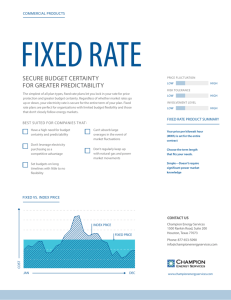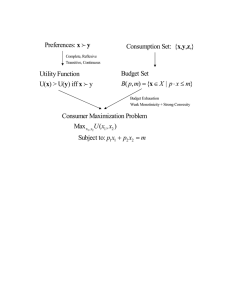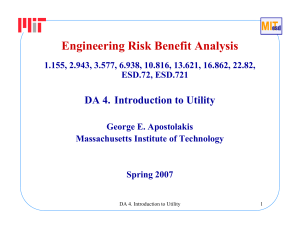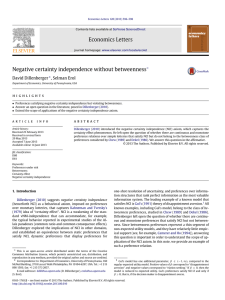Cautious Expected Utility and the Certainty E¤ect Simone Cerreia-Vioglio David Dillenberger
advertisement
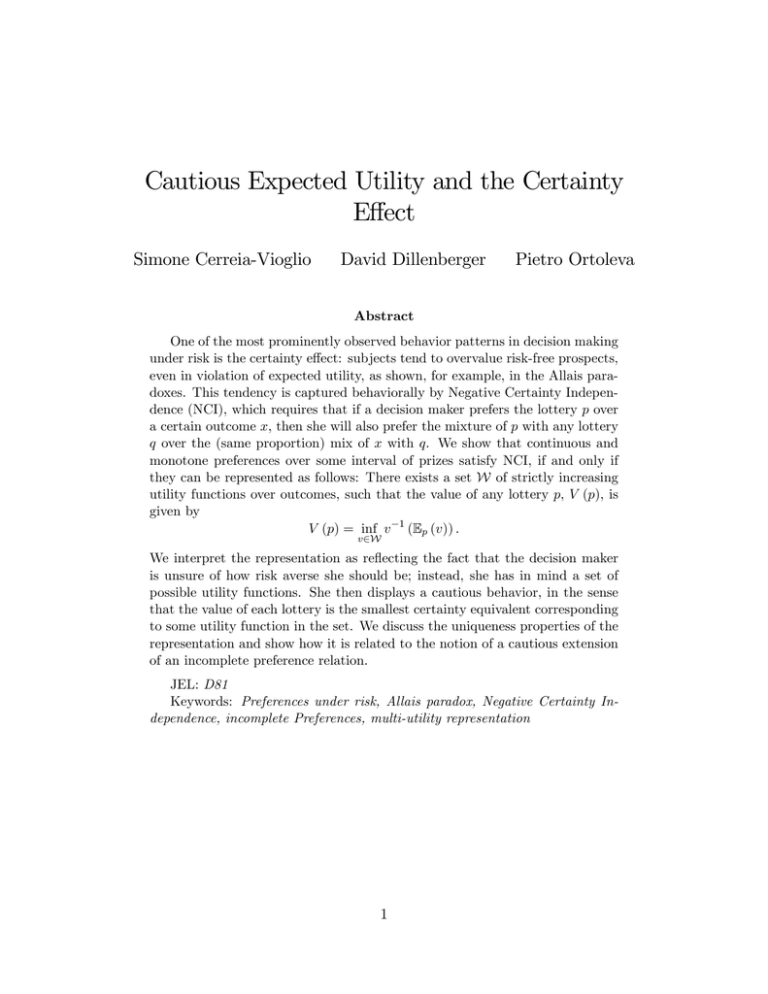
Cautious Expected Utility and the Certainty E¤ect Simone Cerreia-Vioglio David Dillenberger Pietro Ortoleva Abstract One of the most prominently observed behavior patterns in decision making under risk is the certainty e¤ect: subjects tend to overvalue risk-free prospects, even in violation of expected utility, as shown, for example, in the Allais paradoxes. This tendency is captured behaviorally by Negative Certainty Independence (NCI), which requires that if a decision maker prefers the lottery p over a certain outcome x, then she will also prefer the mixture of p with any lottery q over the (same proportion) mix of x with q. We show that continuous and monotone preferences over some interval of prizes satisfy NCI, if and only if they can be represented as follows: There exists a set W of strictly increasing utility functions over outcomes, such that the value of any lottery p; V (p), is given by V (p) = inf v 1 (Ep (v)) : v2W We interpret the representation as re‡ecting the fact that the decision maker is unsure of how risk averse she should be; instead, she has in mind a set of possible utility functions. She then displays a cautious behavior, in the sense that the value of each lottery is the smallest certainty equivalent corresponding to some utility function in the set. We discuss the uniqueness properties of the representation and show how it is related to the notion of a cautious extension of an incomplete preference relation. JEL: D81 Keywords: Preferences under risk, Allais paradox, Negative Certainty Independence, incomplete Preferences, multi-utility representation 1
